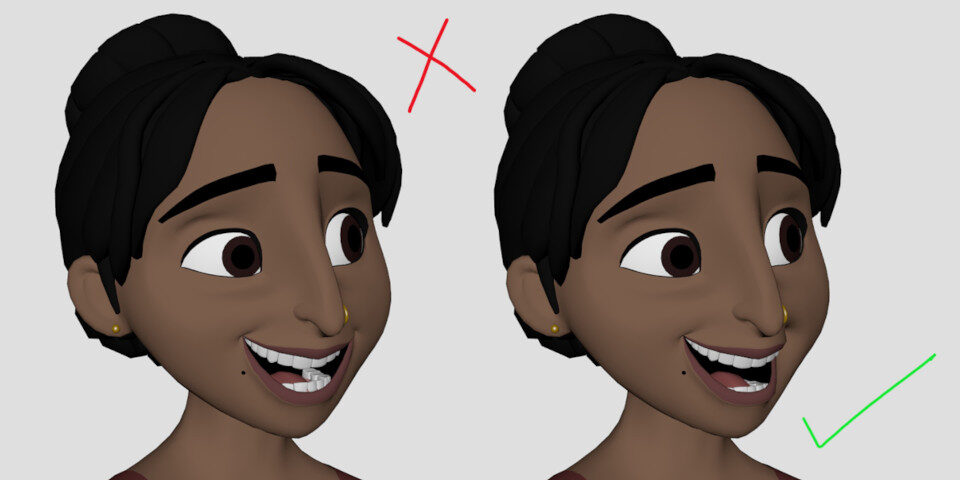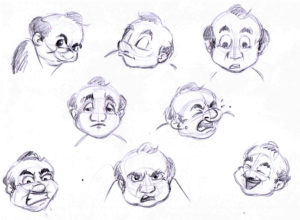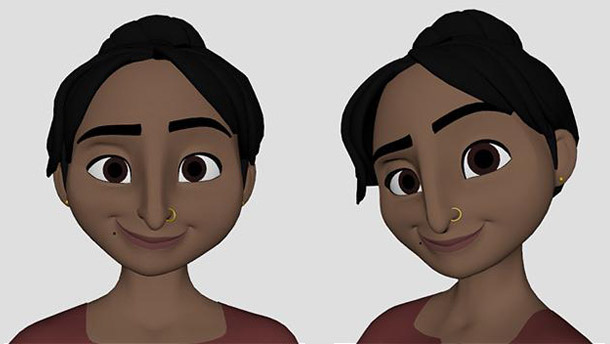Are you tired of using your own face to express yourself? Well, good news! In this article, we will explore the exciting world of using animations or illustrations as an alternative to your own face. Imagine the freedom and creativity that comes with this new way of expressing yourself. Say goodbye to the limitations of facial expressions and hello to a whole new level of customization. Get ready to dive into the world of enhancing expression through animations or illustrations!
Enhancing Expression: Ditching the Face for Animations or Illustrations
In today’s digital age, communication has evolved significantly, with virtual interactions becoming increasingly prevalent. The rise of digital communication platforms has provided us with new ways to express ourselves and connect with others from across the globe. One such trend that has gained immense popularity is the use of animations or illustrations instead of our own faces. This article will explore the benefits, challenges, and tools associated with using animations or illustrations, as well as provide tips for implementing them effectively.

This image is property of www.cgchannel.com.
The Rise of Digital Communication
With the advent of social media, messaging apps, and video conferencing tools, digital communication has become an integral part of our lives. The ability to connect with others instantly, regardless of geographical boundaries, has revolutionized the way we interact with one another. Traditional forms of communication, such as phone calls and face-to-face meetings, have taken a backseat, with virtual interactions taking center stage. This shift has paved the way for innovative ways to express ourselves, leading to the emergence of animations and illustrations as alternatives to our own faces.
Exploring the Use of Animations
Animations offer a dynamic and engaging way to communicate, allowing individuals to convey emotions, ideas, and messages more effectively. By utilizing animated characters or objects, you can bring your conversations to life and inject a sense of personality into your digital interactions. Whether it’s a simple smiley face to express happiness, a dancing character to convey excitement, or a crying emoticon to symbolize sadness, animations provide a vast array of options to express yourself creatively.
Beyond personal expression, animations can also be used to enhance storytelling and presentations. Whether you’re creating a marketing video, a tutorial, or a product demo, animations can captivate your audience and deliver your message in a visually appealing and memorable way. From animated infographics to explainer videos, the possibilities are endless when it comes to using animations as a powerful communication tool.
Benefits of Using Illustrations
While animations bring a certain level of dynamism to digital communication, illustrations offer a different aesthetic appeal. By using illustrations, you can add a touch of artistry and creativity to your virtual interactions. From hand-drawn sketches to vector graphics, illustrations can convey complex ideas and emotions in a visually stunning manner.
One of the key advantages of illustrations is their versatility. They can be adapted to suit various styles and themes, allowing you to customize your visual content to reflect your personal brand or the tone of your message. Moreover, illustrations have the power to evoke emotions and create a sense of connection with your audience. A well-crafted illustration can elicit feelings of joy, nostalgia, or inspiration, making your digital interactions more memorable and meaningful.
Challenges of Using Faceless Communication
While animations and illustrations offer numerous benefits, there are also challenges associated with relying solely on faceless communication. One of the primary drawbacks is the potential for misinterpretation or miscommunication. When using animations or illustrations, your facial expressions and body language are not visible, and this can sometimes lead to misunderstandings. Non-verbal cues play a significant role in conveying meaning, so the absence of the face can pose a challenge in certain contexts.
Another challenge is the potential for losing the human touch. Face-to-face communication allows for a sense of intimacy and connection that is harder to achieve through animations or illustrations alone. While these visual elements can be engaging and expressive, they may not fully capture the warmth and authenticity that comes from interacting with another person directly. Striking a balance between digital expressions and personal interactions is crucial to ensuring effective and meaningful communication.

This image is property of animationkolkata.com.
Choosing Between Animations and Illustrations
When deciding whether to use animations or illustrations, it is essential to consider your purpose, target audience, and desired tone of communication. Animations are well-suited for conveying emotions and bringing dialogues to life, making them ideal for casual conversations or animated storytelling. On the other hand, illustrations excel at capturing visual beauty and artistic expression, making them a perfect choice for creative projects or more formal presentations. By understanding the strengths and limitations of each medium, you can choose the most appropriate form of expression for your specific needs.
Tools and Software for Creating Animations
Creating animations may seem like a complex task, but thanks to advancements in technology, there are now numerous tools and software available that make the process more accessible than ever before. Whether you’re a professional animator or a novice attempting to add a touch of animation to your digital communication, these tools can help bring your ideas to life.
Some popular animation software options include Adobe Animate, Toon Boom Harmony, and Moho (formerly Anime Studio). These programs provide a wide range of features and functionalities, allowing you to create stunning animations with relative ease. Additionally, there are online platforms, such as Powtoon and Vyond, that offer a simplified interface and pre-designed assets, making animation creation more accessible to beginners.
Popular Animation Styles
When it comes to animations, different styles can evoke varying emotional responses and visual aesthetics. Some popular animation styles include 2D, 3D, stop-motion, and motion graphics. The choice of animation style depends on your intended message, the level of realism you desire, and the complexity of the project.
2D animations, characterized by their flat, two-dimensional appearance, are widely used in cartoons and explainer videos. They are often more lighthearted and playful in nature, making them suitable for casual communication. 3D animations, on the other hand, offer a more realistic and immersive experience, often seen in movies, gaming, and product visualizations. Stop-motion animations create a unique appeal through the use of physical objects, giving a tangible and tactile feel to the visuals. Motion graphics, combining elements of graphic design and animation, are commonly used for creating dynamic and informative videos.
Case Studies: Successful Use of Animations
Several businesses and individuals have successfully incorporated animations into their digital communication, resulting in engaging and memorable experiences. One notable case study is Dropbox, a cloud storage company, which effectively used animations to demonstrate the ease and efficiency of their service. By simplifying complex concepts through animated visuals, Dropbox was able to resonate with their target audience and increase user engagement.
Another example is the TED-Ed educational platform, which uses animated videos to make their educational content more accessible and engaging. By bringing to life concepts and ideas through animations, TED-Ed has effectively captured the attention of learners of all ages, facilitating a deeper understanding of complex topics.
Both these case studies highlight the power of animations in delivering information, simplifying concepts, and fostering audience engagement. When used strategically, animations can transform digital communication into a vibrant and interactive experience.

This image is property of www.cgchannel.com.
Tips for Implementing Illustrations Effectively
To make the most out of illustrations, it is important to consider a few key factors. First and foremost, ensure that your illustrations align with your message and the desired tone of your communication. Whether you opt for a minimalist style or a more intricate design, make sure it complements your content rather than distracting from it.
Secondly, strive for consistency in your illustrations. This can be achieved by using a similar color palette, art style, or recurring motifs throughout your visual content. Consistency creates a sense of cohesiveness and strengthens your brand identity, making your illustrations instantly recognizable.
Lastly, remember to strike a balance between illustrations and other visual elements. While illustrations can add visual appeal, they should not overpower or overshadow the main message. Use illustrations strategically to enhance your content and guide your audience’s attention, ensuring that they remain focused on the key information you are conveying.
Overcoming Limitations: Adding Personal Touch
While animations and illustrations offer a vast array of creative possibilities, it’s important to remember the value of personal touch in communication. While faceless communication can be visually engaging, it can also lack the warmth and genuine connection that comes with seeing and interacting with a person’s face. To overcome this limitation, consider incorporating personal touches alongside animations or illustrations, such as a profile picture or a brief video introduction, to provide a balance between the digital and personal.
In conclusion, the rise of digital communication has given us the opportunity to explore new avenues for self-expression. Animations and illustrations offer unique alternatives to traditional face-to-face interaction, allowing us to convey emotions, ideas, and messages in innovative and captivating ways. By understanding the benefits, challenges, and tools associated with animations and illustrations, we can embrace these different forms of expression to enhance our digital communications and create meaningful connections in the virtual realm. So, the next time you wonder, “Can I use animations or illustrations instead of my face?”, remember that these creative mediums can become powerful tools to amplify your voice and enrich your digital conversations.





